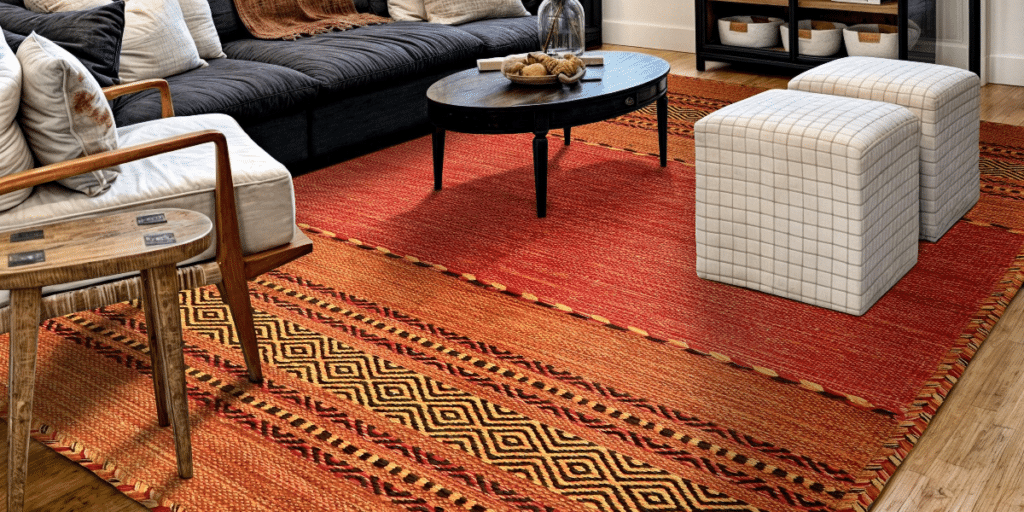Kilim rugs have a timeless charm, and they’re loved for their blend of craftsmanship, color, and cultural history. Whether you’re decorating your home for the first time or looking to add another kilim to your collection, knowing what to look for will help you make the right choice. These woven beauties are unique, but they also come with some specific characteristics worth considering.
Here are six key things to know before you choose the perfect kilim rug for your space.
Are kilims Soft?
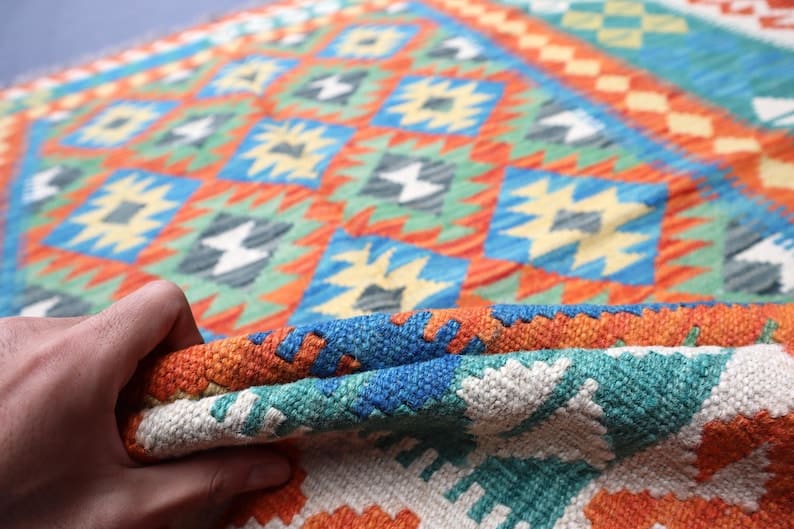
Yes, kilim rugs are soft. Kilim rugs are not the plush, sink-your-toes-in kind of rugs like shag or thick-pile carpets. They’re flatwoven, which gives them a thinner and firmer feel. But that doesn’t mean they’re rough or uncomfortable. In fact, high-quality kilims made from natural fibers like wool or cotton can feel surprisingly soft and pleasant underfoot.
Wool kilims, in particular, have a natural softness while still being durable. Cotton kilims can also be comfortable, but they tend to feel a bit firmer. If you love the look of a kilim but crave extra comfort, you can layer it over a soft rug pad for a little more cushion.
Kilims have a firmer texture compared to fluffy rugs, but with the right material and a rug pad, they can still feel cozy.
How Thick is a Kilim Rug?
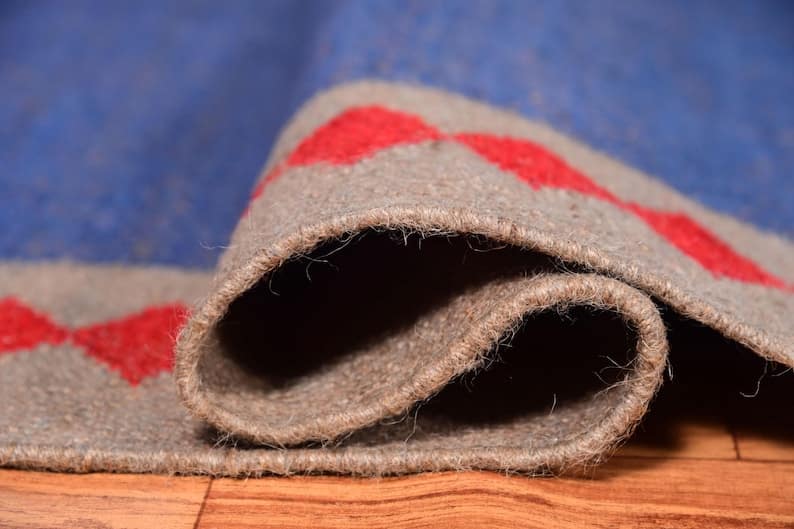
Kilims are known for being thin — typically between 3 and 7 millimeters thick. This slim profile comes from their flatwoven construction. If you’re used to thicker rugs with a pile, this can be a bit of a surprise at first. But that thinness has its perks!
Because they’re so thin, kilims work perfectly under furniture or in spaces where you need the rug to lay flat, like under doors that swing open. They don’t bunch up easily, and they stay low to the ground, which can make your space feel less cluttered.
The thin profile also makes them super versatile. You can roll them up, store them easily, and even move them between rooms when you feel like switching things up. Just remember: since kilims are thin, they benefit from a rug pad to add a little cushioning and help keep them in place.
Kilims are thin, which makes them easy to use in many spaces. A rug pad can give them an extra boost of comfort.
Are Kilim Rugs Good for High-Traffic Areas?
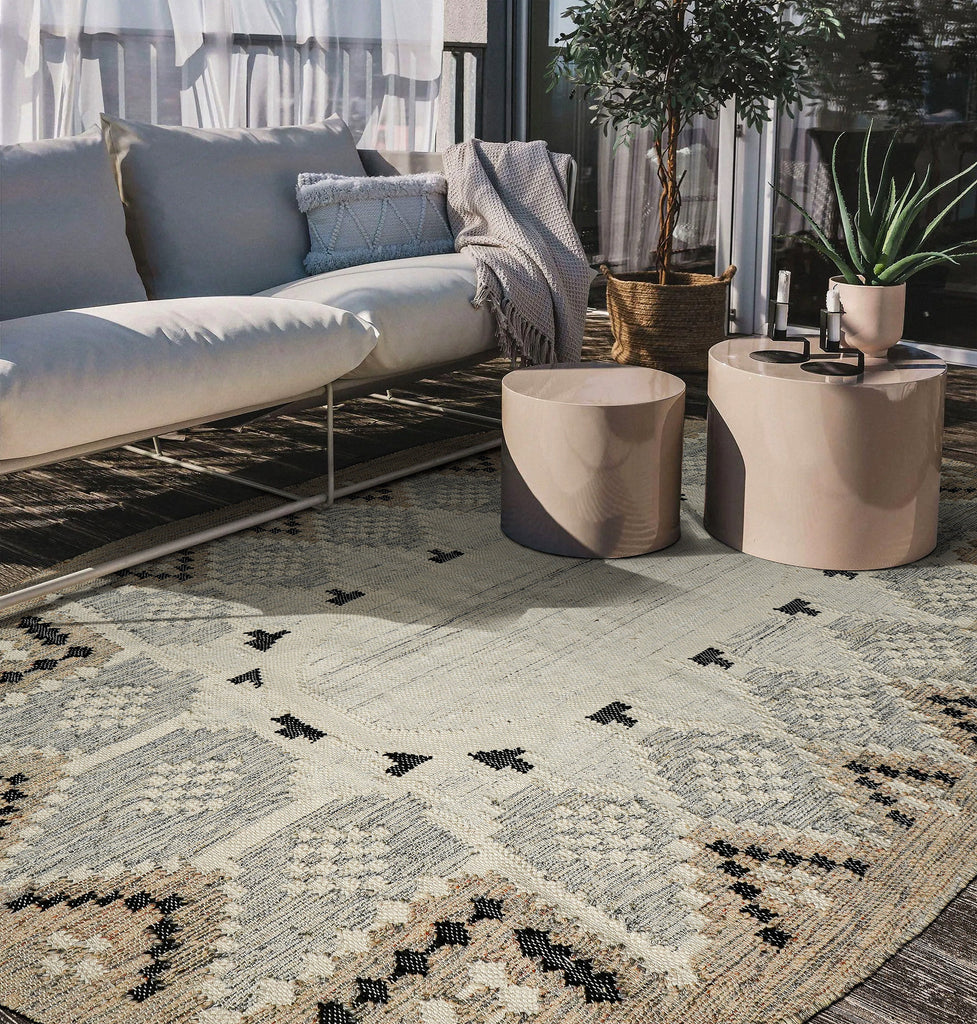
Yes, kilim rugs good for high traffic areas. If you’re looking for a rug that can handle busy spaces like your hallway, living room, or entryway, a kilim is a solid choice. Their flatwoven construction makes them tough and durable. They don’t have a pile to get crushed or matted down, so they tend to look great even after a lot of foot traffic.
Another bonus? Kilims are excellent at hiding wear and tear. Their intricate patterns and vibrant colors do a fantastic job of masking dirt or minor stains. Plus, because they’re relatively lightweight, they’re easy to take outside and shake out or clean when needed.
However, to help your kilim last even longer in high-traffic areas, consider using a rug pad underneath. It’ll reduce friction between the rug and the floor, which helps prevent premature wear. Rotating the rug every few months can also keep it looking even.
Can Kilim Rugs Be Used Outdoors?

Using kilims outdoors can be a bit tricky. Traditional kilims are usually made from natural fibers like wool or cotton, which don’t always hold up well to the elements. Moisture, sunlight, and damp conditions can cause these rugs to fade, shrink, or even develop mildew.
However, if you’re set on adding a kilim to your outdoor space, there are some workarounds. Modern kilims made from synthetic materials (like polypropylene) are specifically designed for outdoor use. They mimic the look of traditional kilims but are way more resistant to moisture and sun damage.
If you prefer a natural fiber kilim outside, make sure it’s in a covered area, like a patio, screened porch, or veranda, where it won’t be directly exposed to rain or harsh sunlight. Also, be sure to bring it inside during bad weather and let it dry completely if it gets wet.
Bottom Line: Traditional kilims are best kept indoors or in covered outdoor spaces. For fully exposed areas, go with a synthetic outdoor kilim.
Are Kilim Rugs Reversible?

Yes, they are — and that’s one of the coolest things about kilims! Because of their flatwoven nature, both sides of a kilim look almost identical, which means you can flip it over whenever you want. This doubles the rug’s lifespan and gives you more flexibility in your decor.
If one side of the rug starts showing signs of wear or gets a stain, just flip it over, and you’ve got a fresh-looking rug again. Some kilims even have slight variations in color or texture on each side, giving you a subtle change of style with a simple flip.
Reversibility also makes kilims practical for busy households. Instead of worrying about immediate cleaning or repairs, you get a quick solution that keeps your space looking good.
Do Kilim Rugs Need a Rug Pad?
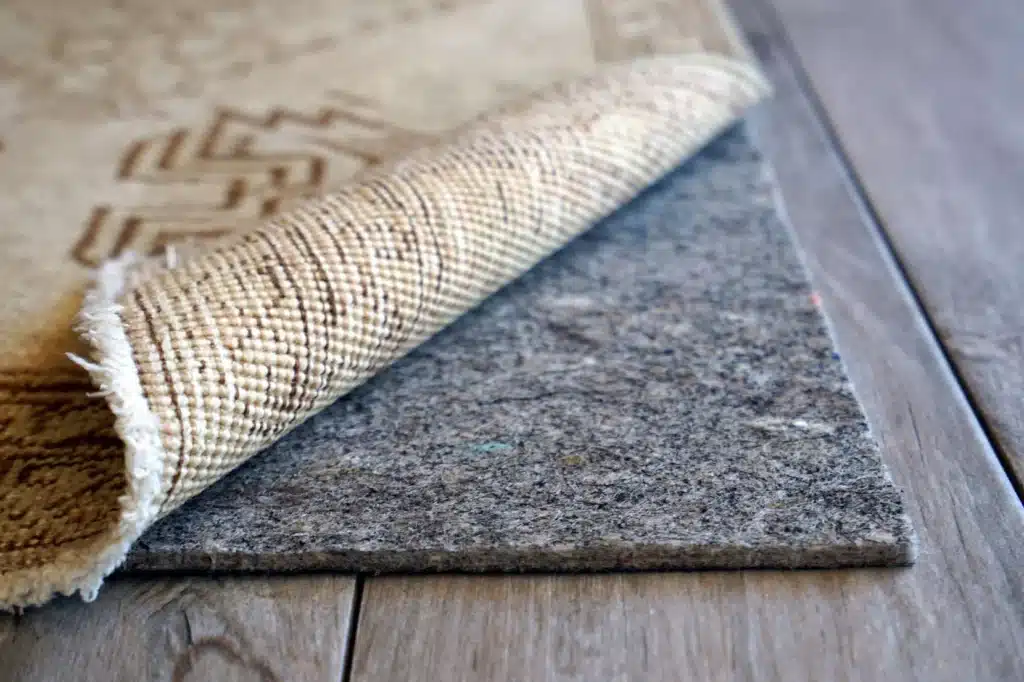
Yes, Kilim Rugs Need a Rug Pad. While you can use a kilim rug without a pad, adding one makes a big difference. Kilims are flatwoven and relatively thin, which means they can slide around easily on smooth floors like hardwood, tile, or laminate. A rug pad keeps the kilim securely in place, preventing slipping hazards. Technically, you can use a kilim without a rug pad, but trust me — you’ll be happier if you do. A rug pad serves a few important purposes:
- Prevents Slipping: Kilims are lightweight and can slide around on smooth floors. A rug pad keeps them securely in place, which is safer for everyone.
- Adds Comfort: Since kilims are thin, a rug pad gives them a little extra cushion, making them comfier to walk or sit on.
- Protects the Rug: A rug pad reduces friction between the rug and the floor, which helps prevent wear and tear over time.
- Keeps Things Looking Neat: A rug pad helps the kilim lie flat, preventing those annoying wrinkles or bumps that can make a room look untidy.
When choosing a rug pad, go for one that suits your flooring. For hardwood, a felt-and-rubber pad works well. For spaces with low door clearance, a thinner pad might be the best option.
Wrap Up

Kilim rugs collection
Explore a diverse collection of rugs crafted for style and durability. From kilims to modern designs, find your perfect rug at Kilim Provenance.
Choosing the right kilim rug doesn’t have to be complicated. By keeping in mind key factors like softness, thickness, durability, and the importance of a rug pad, you can easily find a kilim that fits your needs and style. Ready to find your perfect kilim? Check out our curated collection at Kilim Provenance. We offer a variety of authentic, high-quality kilims to suit any space, and our team is here to help you choose the one that feels just right. Discover the warmth, craftsmanship, and timeless appeal of a kilim rug today!

